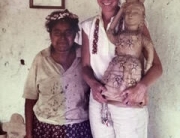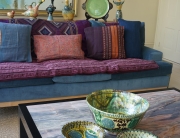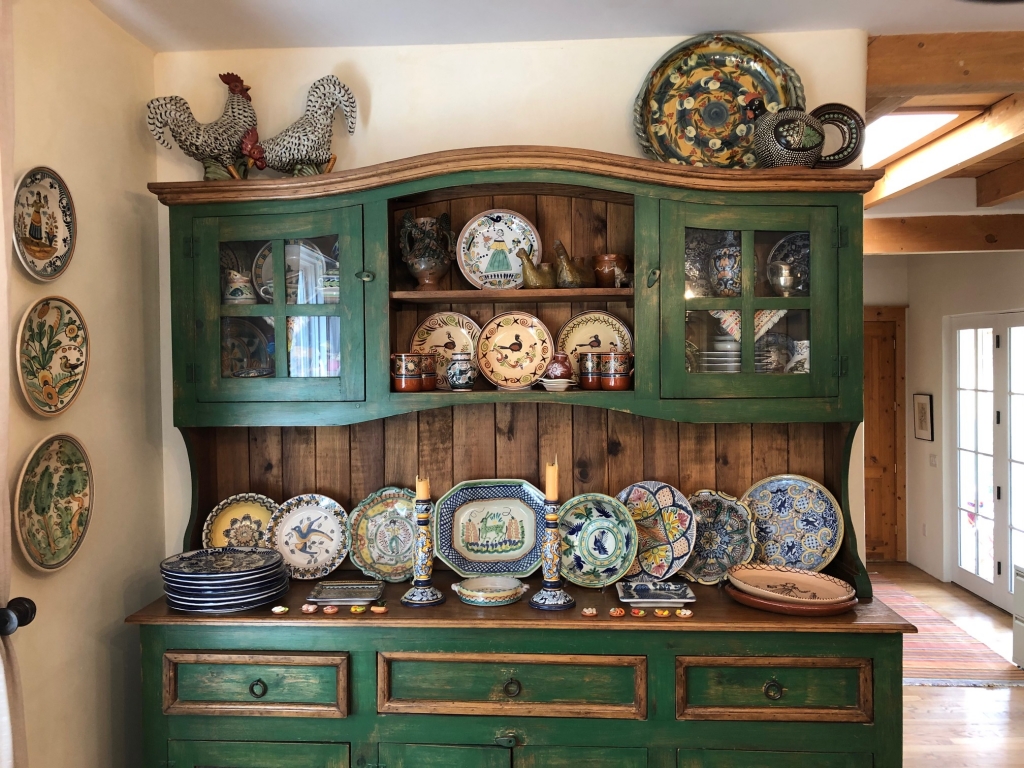
What a joy to be asked to write something under the rubric “Living with Folk Art,” allowing me to reflect on my long engagement with the handmade and the many things I have loved (and sometimes lost) that give me pure delight, pause, and wonder.
Looking around my home today, the accumulation of things that surround me range from: the sparkly, sequined voudou flag of a man and bull, the symbol of Haiti, made by George Valris, right in front of my computer. An owl mask of striking contemporary design and a tiger mask with eyes made of mirrors. Beribboned fiesta hats from Chiapas and a water seller’s hat from Morocco. Baskets from Swaziland, Rwanda and South Carolina, and textiles from around the globe. There’s even the full-sized, cottonwood pig by Felipe Archuleta that I have hauling around since 1975, a hundred-pound treasure in black and white.
But if there is one medium that continues to predominate, and to capture my interest on a daily basis, it is perhaps the most humble and ancient one, earthenware pottery. This is a form that has persisted for millennia. It created a revolution in the lives of our ancestors who used it to build their bricks and roofs, carry their water, hold their food, and even worship their gods. What is it? Earthenware is distinguished from three other major forms of ceramics (stoneware, porcelain and bone china), by the fact that is non-vitreous, meaning it will absorb moisture unless it is made impervious with a glaze. It is fired at a relatively low temperature. Upon leaving the kiln, its surface, which may have been slip decorated or not, emerges relatively soft thus allowing for many types of surface decoration, such as incising with a knife or burnishing. When the earthenware is glazed, it sometimes receives a second firing, and can achieve water-tightness. But it will always be more fragile, and prone to chipping, than high-fire forms.
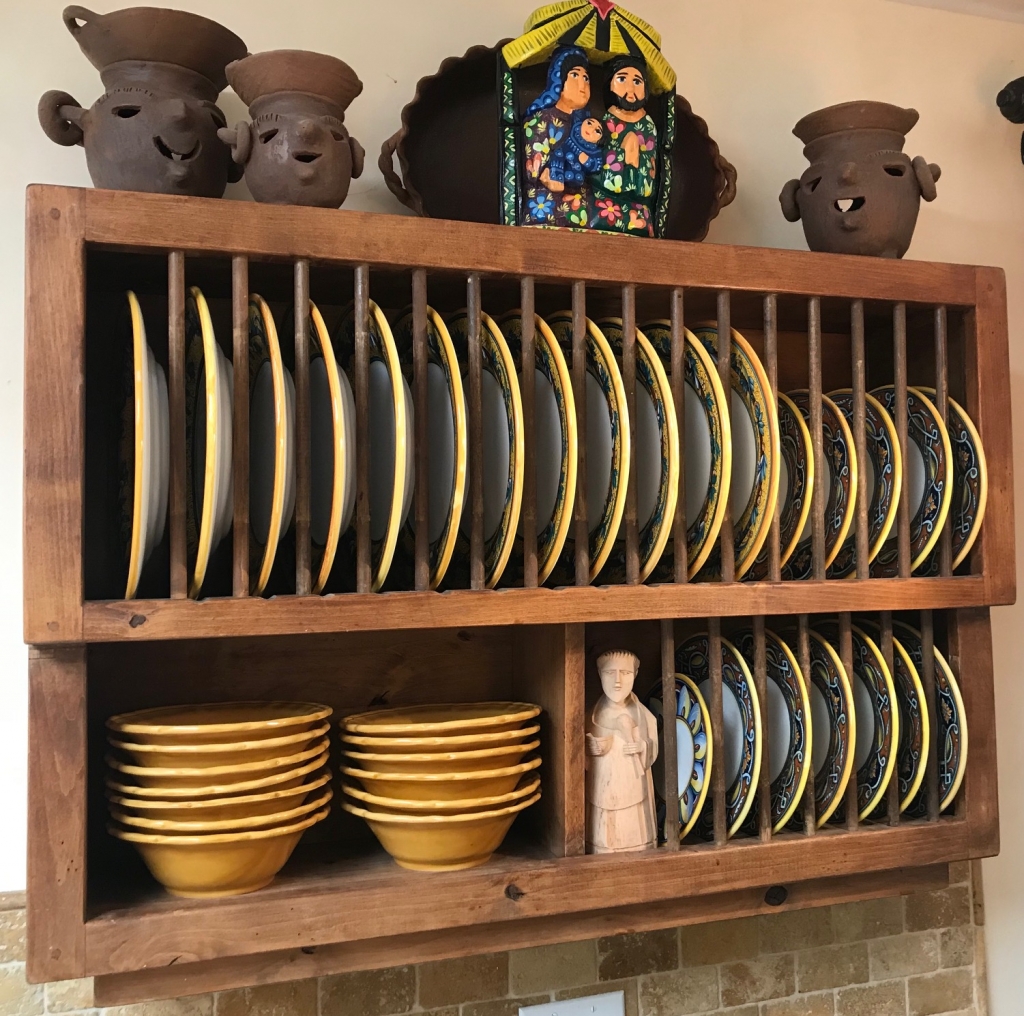
To love earthenware is also to surrender to the imperfection of the form—there will be repairs, there will chips, and sometimes you will hold in your hands a collection of shards instead of a pot. That said, some of these ceramics can and do survive for centuries. Earth. Earthenware. The skilled hands of the potter take the most elemental substances—earth and water–and with inspiration and the magic of fire in the kiln, transform it into objects of art and utility. They can be fit for royalty or as simple as an unadorned cooking pot. I love the rich red color of the clay when it is presented in its most low-fired form, often referred to as terra cotta. I love the kiln-produced smoke marks that emerge when a potter uses reduction firing, and I am astonished at the variety of techniques and human expression that earthenware encompasses in its ornamentation, from the high Renaissance sophistication of Italian maiollca, to the simplicity of redware. I just love it all.
I find living with earthenware practical and easy. While I eat on a daily basis off simple white porcelain, tough enough to survive the dishwasher unscathed, not a dinner goes by that I don’t make use of the various types of majolica dinnerware I have collected—from the jauntily drawn and decorated pieces by Gorky Gonzales of Guanajuato, Mexico, to the rich and multilayered patterns of Franco Mari from Deruta, Italy, to the beautiful blue and white majolica ware that has made Puebla, Mexico famous, with pieces by the Uriarte factory and such talented contemporary potters at Isabelle Collins (a frequent IFAM participant).
Living with earthenware ceramics means the color, texture, and the ineffable quality that the handmade adds to any environment, is present every moment of my day. It enriches my life immeasurably. The breakfront in the dining room and my overhead shelf of Italian plates are the everyday witnesses to daily food prep and numerous family dinners and holiday celebrations held there. I can almost smell the Christmas green chicken enchiladas and the laughter of children at the table each time I survey the scene.
Speaking of scenes, I also like to create little narratives and vignettes from folk art—a kind of adult play, I guess—no doubt influenced by my time on Alexander Girard’s team at MOIFA. On the shelf in my bathroom over the tub I have made an terracotta procession of beasts and mythic figures–of camels from a visit to Oman, of clay appliqued elephants and Ganeshas from India made by Dolon Kundu from West Bengal, India (who was at the Market in 2008), and numerous charming mermaids–they like the water! –by members of the Blanco family, my favorites being those by Leticia Blanco, of Santa Maria Atzompa, Oaxaca, Mexico.

On my kitchen windowsill sits one of my favorites pieces of painted earthenware, a piece by Josefina Aguilar that I bought from her at her home in Ocotlán de Morelos, in Oaxaca, Mexico. Since Mexico and its people are truly one of the loves of my life, this little piece reminds me of the pleasure of sitting on a bench in the zocalo of a small Mexican town watching the world go by. And juxtaposing this rather engaged couple on the wildly painted bench with the orchid and the devil car from Ocumicho means I get to smile every time I have a dish to wash. And to wonder: did the guy ever get the girl?
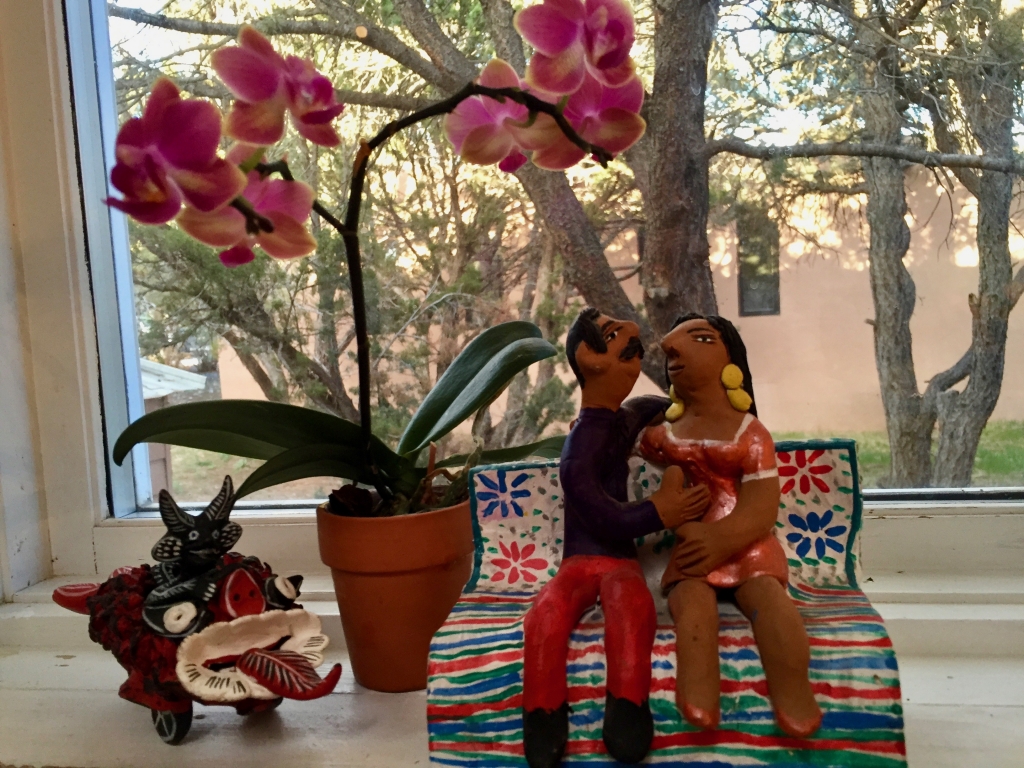
But of all my favorites, I would have to say that the figurative terracotta ceramics created by the great master Don Jose Antonio Garcia of San Antonino, Oaxaca, and his family, are the ones that keep me coming back for more. Over thirty years ago I was shopping at Jackalope and saw these two planters in the shape of heads, just sitting in the pottery yard. I was immediately drawn to them though I knew nothing at all about them, where they came from or who had made them. I was fascinated by the elegance of the woman with her beautiful braid and her kind-looking man with his upswept moustache. Now, I can’t quite believe we nailed them to porch railing, just like that. But they have survived, and each summer, planted with brightly colored portulacas, they beautify our favorite outdoor space.

Little did I know that Don Jose and his wife Teresita Mendoza, would one day see those pieces he had made, as dinner guests in my home, during one of the several years that they participated in IFAM. Don Jose, who many of you have met at Market, is now blind. But that doesn’t stop the imagery that flows from his mind to give form to powerful figures of somber women in flowered dresses, or of riding peacocks, or holding a cat and flanking a giant dog. Now, Teresita collaborates with Don Jose, making the incised decorations, and often signs the pieces for them both.
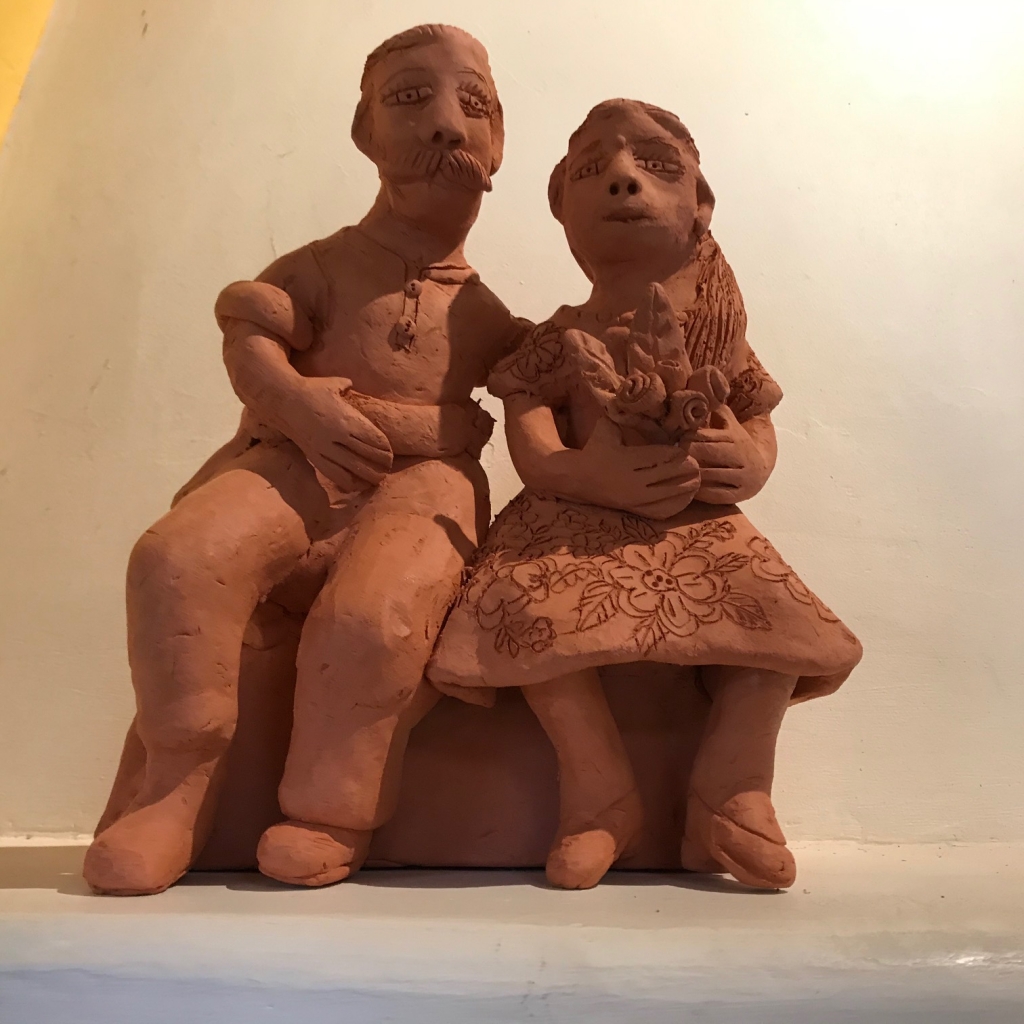
Lastly, there is my newest acquisition, a sensitively rendered piece of yet another couple on a bench. This couple is older, the man also has a moustache and the lady in her flowered dress holds a bouquet of roses. They lean into one another with warmth and familiarity, arms entwined, and look down at me from my fireplace. Inscribed on the back, along with both Don Jose and Teresita’s initials is written: “Novios toda la vida”—“in love for all their lives.” I feel so lucky to feel that love, every day in my life and in my home. For this is one of the sublime pleasures of living with folk art.
****
Charlene is a co-founder of the International Folk Art Market and served as its Executive Director from 2007-2012, and in 2018 served as its Interim Director for three months. As co-founder, she assisted in assembling the first governing board of 23 persons and helped the organization receive its 501(c) 3 status in 2007. She also participated on the Artist Selection Committee in 2006 and 2007. She was Executive Director when the organization was selected as 2009 winner of the Piñon Award for non-profit excellence by the Santa Fe Community Foundation and was invited in 2009 to become a member of the Clinton Global Initiative. Charlene served as Director of the Museum of International Folk Art for fifteen years until her retirement in 1999, and named a Director Emeritus. In 2015 she returned as Interim Director for 8 months during the search for a new Executive Director.

